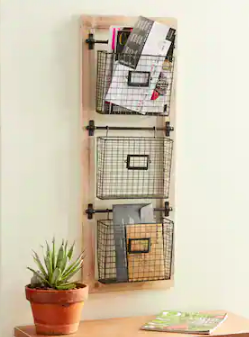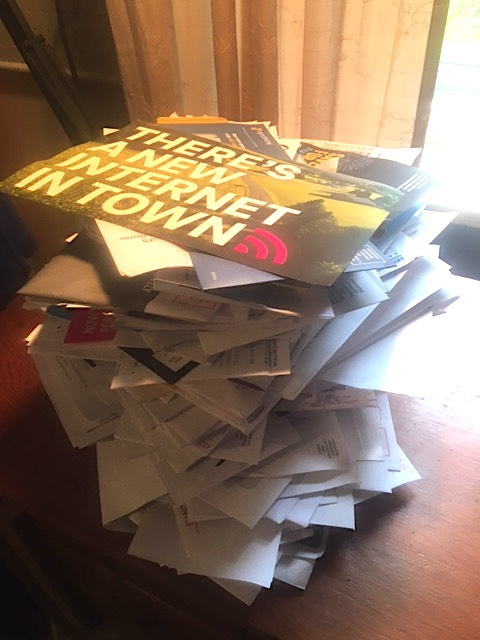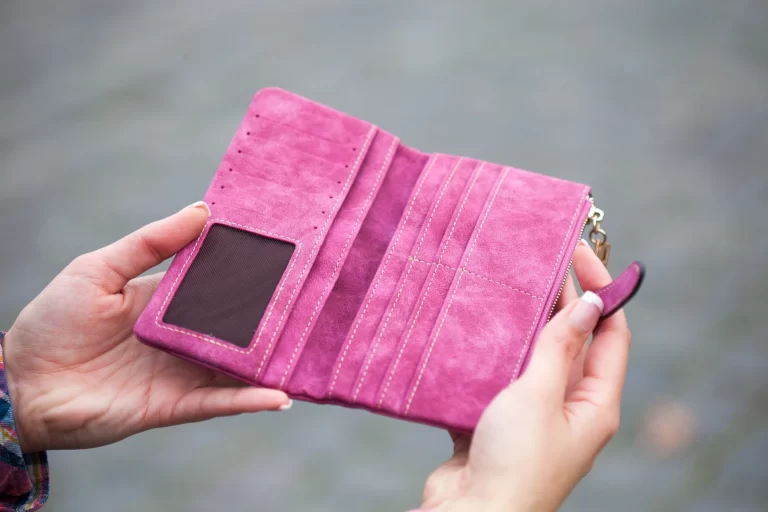An easy way to organize home records
(This post may contain affiliate links. See the full affiliate disclosure here for more info.)
Home records are a necessary evil. Neglect this chore, and you’ll end up tearing your hair out. But implement this simple way to organize your home records and keep them up, and you’ll delight every time you find what you’re looking for!
Why do you need a home record system?
At some point, you’re going to want to know how old the furnace is, what paint finish is on the bathroom wall, or when you had your appendix out.
You also need to sort papers that need immediate attention, i.e., bills to be paid, from those you simply want to store for accessing later.
When that happens, you can spend hours sifting through home records, scanning paint cans with important information covered by paint drips, and tearing your hair out.
Systems in your home have an estimated lifespan, and it helps with budgeting to know how old your systems are so you can plan for replacement.
If you face placing a homeowner’s insurance claim, you will have to prove what you had.
But a few proactive steps can prevent all that stress and clear that pile of papers.
What you need to keep home records organized
Homeowner information
Manuals
I divide these into small items, appliances and lawn equipment. But, you have to use categories that make sense to you and your needs. When a repair is done, I staple the receipt to the manual so I know what was repaired or replaced, when, and by whom.
Routine maintenance and updates performed
Our septic tank has to be pumped periodically. The only way I can remember when it was done—and so needs to be done again—is to record it.
Other types of routine maintenance examples are furnace servicing, car records, and things like paint and wallpaper.
Living in an old house has meant lots of painting. I’ve gone through so many shades of gray trying to find the right one for the bathroom that if I hadn’t kept records, I wouldn’t know the one I finally settled on (i.e., the one I didn’t paint over immediately).
I record the store where I purchased it, the brand, color name, finish (matte, semi-gloss, etc.), the room I painted, and the year it was painted.
For the same reasons above, we’ve been through our share of wallpaper. I love the character wallpaper lends to an old house, but it’s a little harder to repair small problems, like paper picked at by little curious hands and damage from stains.
I grew up in a house built in the 1920s where my mother used to say the wallpaper was holding the walls up. She also taught me that wallpaper “covers a world of sins.” That’s sage advice that I’ve relied on more than once.
She also carried a little piece of paper in her purse that listed the number of rolls of wallpaper it took to cover each room in her house—just in case she came across some wallpaper she couldn’t live without.
I keep that information on my home records. Thanks, Mom.
Big updates, repairs, and replacements
Certainly, a new roof, furnace, or septic goes on this list. We had the porch replaced, and I already never would have guessed how long ago that was.
This type of information is very important if you are planning to move. You’ll be quizzed as to the age of the important systems in your home, and new systems can be a selling point.
Important documents
Financial records, medical records, dates of major medical procedures and findings, pet records, car titles, home deed, loan and credit card agreements, and contracts are all sources of information you’ll have to access sooner or later.
The other category of important documents is those needing immediate attention. Bills, correspondence to respond to, coupons that will expire, and appointments to make and keep all belong in this category.
Meaningful items
These are things like the perfectly complete list of things to take camping, the list of distant relatives your mom handwrote, and other irreplaceable gems.
The perfect home record organization system
How to organize home records
What you’ll need

>>5 Bins—the size will depend upon the size of your paper clutter pile. Get laundry baskets if you have to!
>>File folders
>>Filing system—I use a second-hand file cabinet I got for $5. I decoupaged old maps onto the drawer fronts, saving both the cabinet and maps from the trash.
>>Hanging file folders if you’re using a filing cabinet
>>Pens or markers
Step-by-step system to organizing your information
- Collect all your papers
- Label the bins:
- Deal with—these items need action on your part, such as renewing an auto registration, making an appointment, or bills to be paid
- Recycle—this is junk that doesn’t contain any personally identifiable information like account numbers or social security numbers such as magazines, newspapers, and junk mail
- Shred—this is junk with personally identifiable information
- Household—these will be items related to your household, such as user manuals, important maintenance records, and receipts, especially receipts you may need for filing taxes. This is where paint and other information pertaining to your unique household should go.
- Archive—into this bin, put medical records, school and academic records, deeds, leases, warranties, tax returns, and contracts. Depending upon your storage capability and your need to access certain records, you may keep two types of archives. Personally, I keep one year of medical records, including insurance reimbursements and medical payments made for tax purposes. However, I have a more long-term fireproof storage file for my house deed, car titles, dates of important medical procedures and findings, and tax returns.
- Organize your papers
Distribute your papers into the bins according to their classification
There! It looks better and seems more manageable already, right?
The Shred and Recycle bins are self-explanatory. Get to those when you have the time.
Find Your Easy tip: Buy one of these personal data roller stamps and block out your personal information and discard the papers as recyclables instead of shredding them, saving time and effort.
Now, you’ll organize the Household and Archive bins.
- Label the file folders with names that make sense to you.
- Sort the papers in the Household bin one by one into folders. Then, put the folders into an accordion file or hanging file folders in a file cabinet. I don’t usually label the hanging file folders, but you certainly can.
- Now, sort the Archive bin similarly. Since these items will be stored long-term and you probably won’t access them often, either move them to their own storage box, fireproof and locking, if desired, or to the bottom drawer of the file cabinet.
The Deal With papers need to go to a prominent place, maybe on your desk, where you will notice them and take the appropriate action
- Keeping up your organizing system
The good news is that once you do the “big sort,” you won’t have to do it again. One caveat, though, every few years, I try to sort through the file cabinet and toss manuals to items we no longer have, shred last year’s medical reimbursement and payment information, and things like that.
Once the slots are full, move the papers to their appropriate folders. It probably won’t take you more than half an hour, including filing and shredding.
Maintaining, AKA keeping up, with paper sorting and filing home records

Now, you will need a new system. This will be the key to keeping the daily paper clutter under control. I got this hanging metal organizer from Overstock.
Get, find, or make your own set of three or four slots. These will be used to sort paper as it enters the house.
For every bit of paper that you get, either immediately recycle it or move it to the organizer Shred, Household, Archive, or Deal With files.
Personally, I combine Household and Archive into one file slot because it makes me clean the slot more often.
If it makes sense to have the Deal With piles somewhere else, somewhere that will get action taken, do that.
Once the slots are full, move the papers to their appropriate folders. It probably won’t take you more than half an hour, including filing and shredding.
A word about photos
I’m not talking about family photos here, but pictures of the items in and outside your home.
Pictures will help for insurance purposes. If you take them on your phone and allow your location under your phone’s settings, they will be tagged with the location and date.
You can organize the physical pictures in a Household folder of their own. But I strongly urge you to store them in the cloud. Backing them up on a thumb drive (or 2!) and keeping them in different places—like one with a trusted relative—is smart.
One of the biggest disasters where I live was a flood due to a hurricane. Homes were uninhabitable, and physical records were lost. That was pre-cloud storage. Enough said.
There is nothing like being able to find records when you need them. Now, you won’t have to guess how old your tires are, the model number of your dryer, or where the title to the car is.
That’s one less stressor off your plate. It’s a great, easy way to get control of the paper and important records in your house, get the bills paid on time, and not miss offers because they expired.
Find more lifestyle hacks and ways to reduce paper clutter.






